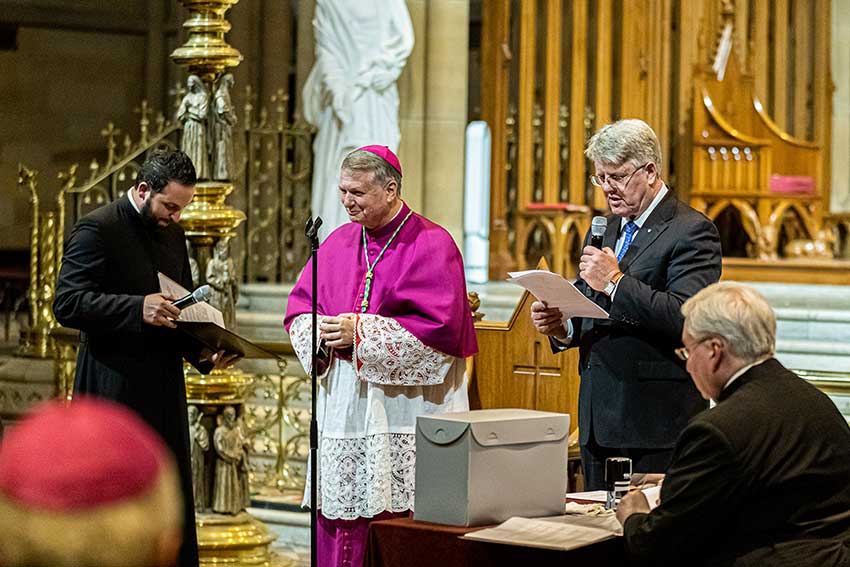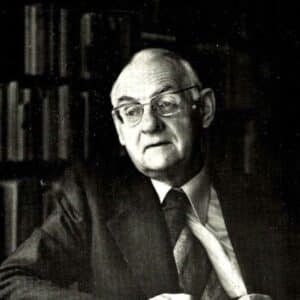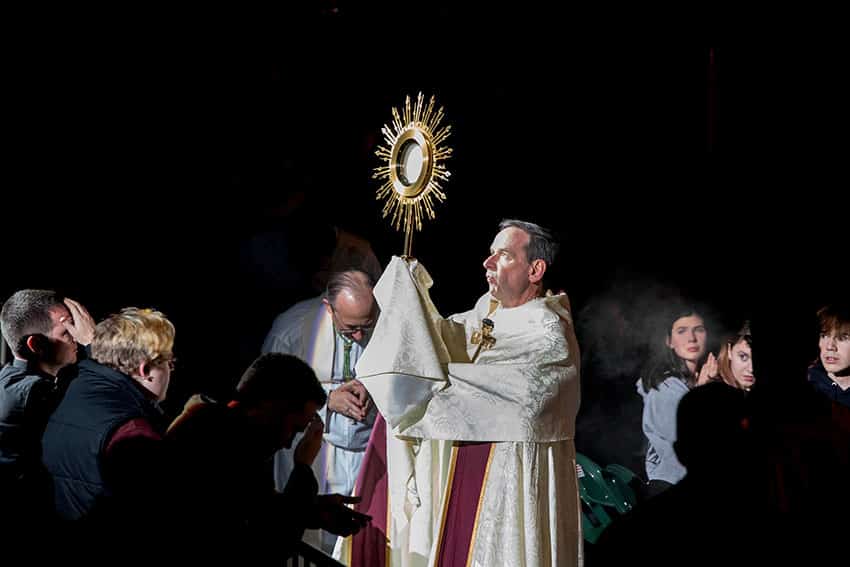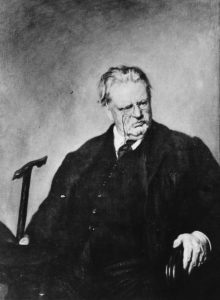
Last week we celebrated a momentous occasion in the life of the Church in Australia – the Opening of the Cause for the Beatification and Canonisation of Servant of God, Eileen O’Connor. A deeply faith-filled woman, who dedicated her life to the service of the poor, crippled by sickness and suffering for the majority of her life, and leaving a legacy of service and love through Our Lady’s Nurses for the Poor.
The path to sanctity

The path to sanctity is one to which we are all called – as the Second Vatican Council reminds us: “Therefore in the Church, everyone whether belonging to the hierarchy, or being cared for by it, is called to holiness, according to the saying of the Apostle: “For this is the will of God, your sanctification” (1 Thess. 4:3).” Each of us, individually, is called to strive to live a life of service to God in the circumstances in which we find ourselves and the unique purpose He calls us to fulfil. Lived examples of holiness – seen through the lives of the saints, and our very own St Mary of the Cross – prompt us to remember that Heaven is our goal.
Balthasar: producing saints

Hans Urs von Balthasar, a 20th century Swiss theologian, in speaking about the structure of the Church and ecumenical councils, provocatively stated: “as never before, the Church is preoccupied with herself, and in particular, the clergy are preoccupied with themselves. They struggle for identity, they practice individual and collective ‘naval-gazing,’ and the greater the confusion of voices, the less the national church knows who she really is.” So what does Balthasar suggest? “The question our ecclesial leaders should be asking is: how does a people produce a saint?” This question was aptly raised by Prof. Tracey Rowland in her opening chapter to the newly released book Ecclesiology at the Beginning of the Third Millennium (Wagner, et al.: Wipf & Stock, 2019).
But what does it mean to be a saint?

If, as St Paul states in his First Letter to the Thessalonians, “for this is the will of God, your sanctification”, and if this is our calling, then the question we all should be asking ourselves is “how does a people produce a saint?” Yes, we bishops need to be asking this question. And I also want to take it a step further – can we all ask ourselves this question? What does it mean to become a saint? What might be necessary to be a saint? And what in my life needs to be sanctified?
We are all called – no exceptions

Each of us is called, each of us is chosen, to a life of deep conversion, radical conversion to the will of God and a life lived exemplifying this calling. If what Balthasar and Rowland identify as a vital need in the Church today, and I honestly believe they have hit the bullseye, then this should be the question at the forefront of our minds as we approach the first session of the Plenary Council in October this year.
As the Church, the Body of Christ, it is important that the conversion of each individual takes precedence over structural reform. Emphasis on personal conversion changes hearts, minds and souls for the greater Glory of God and the common good of all. Emphasis on structural reform, however, only addresses symptoms rather than the deeper cause of hardened hearts closed to the effects of metanoia and the transformative power of grace.
“…Real Catholic pastoral work, educational formation and evangelisation can only take place when there is a personal encounter with Christ mediated by one faithful Catholic to another person.”
As Rowland points out, “real Catholic pastoral work, educational formation and evangelisation can only take place when there is a personal encounter with Christ mediated by one faithful Catholic to another person, either someone who has the faith but needs the maternal care of the Church in some way, or to someone who is only at the beginning of his or her journey of faith.”
“People can only encounter the love of Christ through others who act as completely whole integrated persons with intellects and wills, indeed with their whole hearts, engaged with the encounter with that other person.”
Transforming history
For the Church in Australia to change in the best way we can, the Plenary Council must not be marked by the effects (or grumblings) of mere sociological change. Rather, the impact we need is one where the course of history is transformed by how each member of the Church can be better stewards of grace, heralds of the Gospel, active participants in evangelisation, steeped in prayer and deeply rooted in the sacraments.
As the lay English theologian, Gilbert Keith Chesterton, proposed, “We do not want a church that will move with the world. We want a church that will move the world.” A life marked by grace, conversion, centred on the sacraments and lived in conformity with truth will change the world, one individual at a time.
Related
